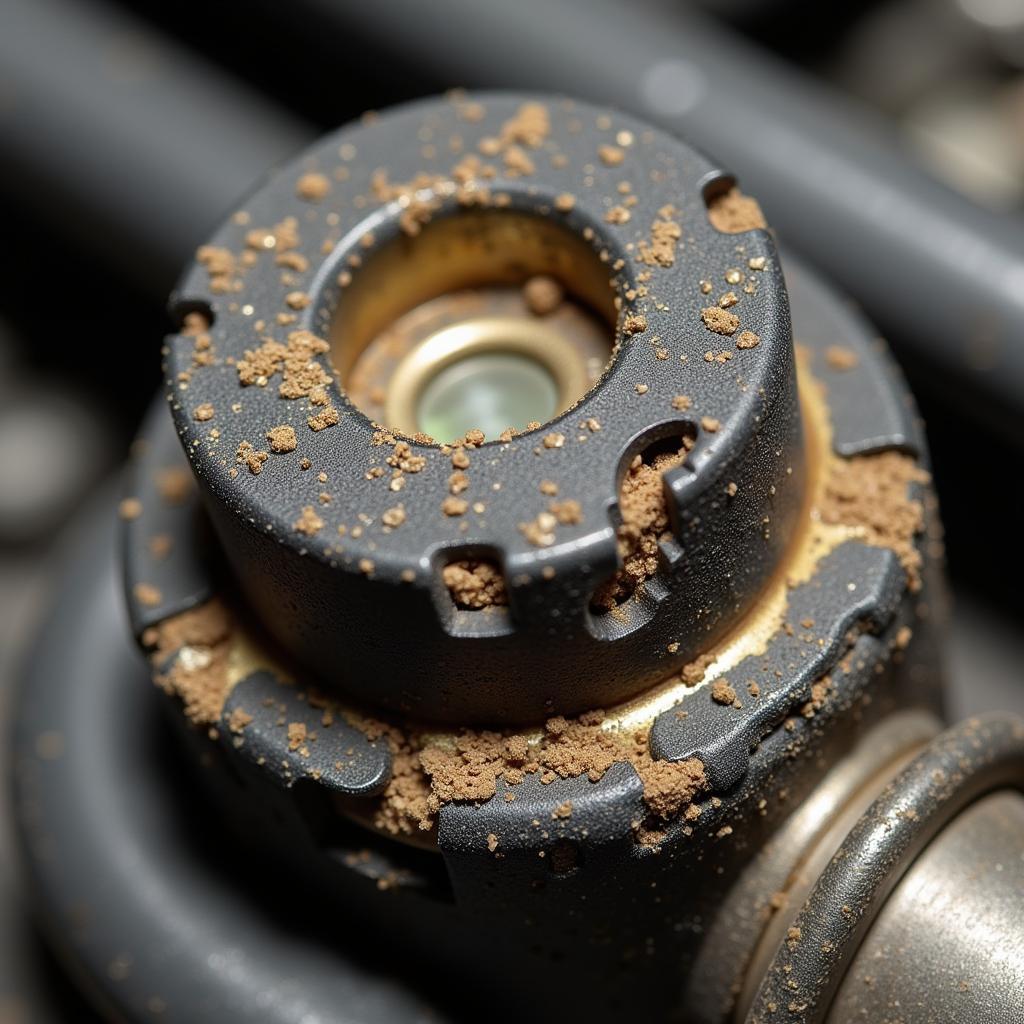The oxygen sensor, or O2 sensor, plays a crucial role in your car’s engine performance and emissions control. A malfunctioning O2 sensor can lead to a variety of issues, from reduced fuel efficiency to increased emissions. Understanding What Can Cause Problems In Cars O2 Sensor is crucial for maintaining a healthy and efficient vehicle.
If you are experiencing car sensor problems check engine light, it might be due to a faulty O2 sensor. A failing O2 sensor can disrupt the delicate balance of the air-fuel mixture, leading to poor engine performance and increased emissions. This article will delve into the common culprits behind O2 sensor problems, empowering you to diagnose and address these issues effectively.
One of the most common car breakdown problems is related to sensor malfunctions, including the O2 sensor. The O2 sensor is constantly exposed to extreme temperatures and harsh chemicals, making it susceptible to wear and tear. Understanding the potential causes of O2 sensor problems can save you time and money in the long run.
Common Culprits Behind O2 Sensor Issues
Several factors can contribute to a failing O2 sensor. Here are some of the most frequent causes:
- Leaded Fuel: Using leaded fuel in a vehicle designed for unleaded fuel can quickly damage the O2 sensor. The lead coats the sensor, preventing it from accurately reading the exhaust gases.
- Silicone Contamination: Silicone-based sealants and additives can also contaminate the O2 sensor. Even a small amount of silicone can render the sensor useless.
- Oil and Coolant Leaks: Leaks in the engine can introduce oil and coolant into the exhaust stream, fouling the O2 sensor. This is especially common in older vehicles with worn seals and gaskets.
- Overly Rich Fuel Mixture: A fuel mixture that is too rich can cause carbon buildup on the O2 sensor, hindering its performance. This can be caused by a faulty fuel injector, a malfunctioning fuel pressure regulator, or a clogged air filter.
- High Exhaust Gas Temperatures: Excessive exhaust gas temperatures, often caused by a malfunctioning catalytic converter, can damage the O2 sensor.
 O2 Sensor Damaged by Leaded Fuel
O2 Sensor Damaged by Leaded Fuel
Identifying a Faulty O2 Sensor: What Can Cause Problems in Cars O2 Sensor?
Recognizing the symptoms of a bad O2 sensor is key to addressing the issue promptly. Here are some signs to watch out for:
- Check Engine Light: The most obvious sign is an illuminated check engine light. While this light can indicate various problems, it’s often the first indication of a faulty O2 sensor. If you are experiencing an engine light problem in car, it’s crucial to get it diagnosed promptly.
- Reduced Fuel Economy: A malfunctioning O2 sensor can cause your engine to run less efficiently, resulting in decreased gas mileage.
- Rough Idle or Misfires: A bad O2 sensor can disrupt the air-fuel mixture, leading to a rough idle, misfires, or even stalling. This is often related to car jogging engine problems.
- Increased Emissions: A failing O2 sensor can compromise your car’s emissions control system, resulting in increased pollutants. This can lead to major emissions problems in car.
- Failed Emissions Test: A faulty O2 sensor can cause your vehicle to fail an emissions test.
 Symptoms of a Bad O2 Sensor
Symptoms of a Bad O2 Sensor
Troubleshooting and Solutions
If you suspect a faulty O2 sensor, here are some steps to take:
- Retrieve Diagnostic Trouble Codes (DTCs): Use an OBD-II scanner to read the diagnostic trouble codes stored in your car’s computer. This will pinpoint the specific issue with the O2 sensor.
- Inspect the O2 Sensor: Visually inspect the O2 sensor for signs of damage, such as cracks, burns, or contamination.
- Test the O2 Sensor: Use a multimeter to test the O2 sensor’s voltage output. A healthy sensor should fluctuate between 0.1 and 0.9 volts.
- Replace the O2 Sensor: If the O2 sensor is faulty, replace it with a new one. It’s important to use the correct type of sensor for your vehicle.
 Replacing an O2 Sensor
Replacing an O2 Sensor
“Regular maintenance is key to preventing O2 sensor problems. Make sure your car receives regular tune-ups and use quality fuel to prolong the life of your sensor.” – John Miller, Automotive Engineer.
“Ignoring a faulty O2 sensor can lead to more serious engine problems down the road. Addressing the issue promptly can save you money and headaches in the long run.” – Susan Davis, Certified Mechanic.
Conclusion
Understanding what can cause problems in cars o2 sensor can help you maintain your vehicle’s performance and avoid costly repairs. By recognizing the symptoms and taking proactive steps, you can keep your O2 sensor in optimal condition and ensure your car runs smoothly and efficiently. If you need further assistance with your car’s O2 sensor or other automotive issues, contact AutoTipPro at +1 (641) 206-8880 or visit our office at 500 N St Mary’s St, San Antonio, TX 78205, United States.
If you encounter most common car breakdown problems, it’s crucial to diagnose them accurately. For further information on engine-related issues, check out this article on car jogging engine problems. Also, understanding major emissions problems in car can help you maintain a healthy vehicle.




Leave a Reply